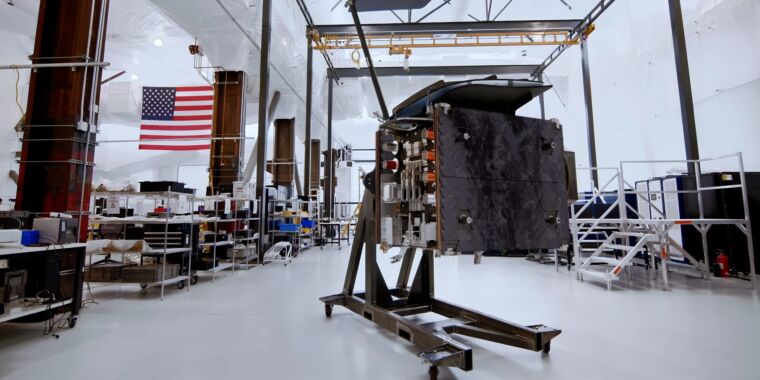
Astranis
Astranis, a company that aims to provide internet connectivity from geostationary space, said in May that its “Arcturus” satellite was successfully deployed after launching on a Falcon Heavy rocket.
After taking control of the satellite, Astranis began sending commands and updating the flight software before elevating Arcturus’ orbit and placing it in a geostationary position overlooking Alaska. Once there, the satellite connected to an Internet gateway in Utah and communicated with multiple user terminals in Alaska.
Some time after, however, the satellite experienced what Astranis characterized as an abrupt anomaly involving a supplier component on the solar panel drive. In an update on FridayAstranis co-founder John Gedmark explained that this assembly pivots to solar panels to ensure they always face the sun, allowing full power for the spacecraft at all times.
“The Astranis engineering team did a fantastic job working around the clock to resolve the issue,” said Gedmark. “We have now reproduced the problem on the ground in a vacuum chamber, zeroed out the exact cause of the failure, and know how to fix it for future spacecraft. Because this failure occurred within the internal workings of a part supplied by a third-party supplier, we are not in a position to go into the full technical details.”
The disappointment in Gedmark’s update is palpable.
“This is a frustrating situation – the Arcturus spacecraft is in a safe state and fully under our control, the payload and our other Astranis-designed components are all working perfectly, and the tanks are being fueled for years of use in orbit,” he said. “But unless something major changes, the mission to provide internet connectivity in Alaska will be delayed.”
Fixed for the future
Astranis was founded in 2015 to determine whether largely internally built microsatellites could deliver high-speed Internet from geostationary space at a low cost. The launch of Arcturus marked the first demonstration that Astranis’ tiny satellite technology worked in space and could survive the harsh radiation and thermal environment previously dominated by much larger satellites costing hundreds of millions of dollars.
Given that this was an attempt to test this technology on a shoestring budget, it is perhaps unsurprising that the satellite ultimately failed due to an unforeseen problem. The real acid test for Astranis now is to make sure it learns from this failure and gets the company’s second satellite up and running in space.
In his update, Gedmark said the company understands how to quickly fix this issue on future spacecraft that are in production. The company is also working on a solution to provide internet services in Alaska, through Pacific Dataport, as originally planned with Arcturus.
The back-up plan, he said, “involves a dedicated, multi-purpose satellite that can operate as a spare satellite in orbit, bridging us to a full replacement satellite. We call this satellite UtilitySat. It can operate anywhere in the world, on multiple frequency bands, with the flexibility of a software-defined satellite. UtilitySat has been in the works for over a year, is in the final stages of integration, and will emerge with our next launch, which will be at the end of this year.”

